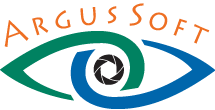
Software for morphometry images of biological drugs – a powerful universal tool, which allows directly to control the process of inputting images, scanning products, as well as methods to automate routine image analysis of biological products and samples: the count, measurement and classification of cells, the definition of nuclear-cytoplasmic relationships, ploidy by Rimspoke, calculation of area and volume fraction of components in biological tissues, and many others. etc.
Basic software features are as follows:
The basis of this software are methods – adjusted and stored operation sequences connected with processing images,
performed in the automated mode.
The software contains a set of methods intended for solution of the most frequently met tasks of image analysis.
If necessary the user can adapt any of the methods for his/her task changing the sets of methods operation.
- Archiving
- Enlarged focus
- Clipping live video
- Improvement of quality
- Manual measurements
- Distribution considering parameters
- Percent of quantity
- Stereometry
- Image density with manual indication of background
- Image density with input of new background fields
- Image density with input of samples
- Changing in time
The delivery set may contain special methods developed for solving user’s specific tasks. Special methods may be
introduced in the software on a commercial basis. These methods are protected using an electronic key and cannot be changed.
The following additional methods are delivered at the present moment:
- Ploidy
- Nuclear cytoplasmic ratio
- Reticulocyte metering
- Calculation of colonies
- Measurement of frequency
- Percent of number of living cells
The methods are represented as stored and changed in accordance with the sequence of image processing set by the user.
The methods can include any of key and additional functions of the software.
Key functions of the software:
- Input of images using television and digital cameras (including 8, 10, 12, 16 bit), scanner, opening images from files, copying them from the buffer.
- Emphasizing the area of interest on the image.
- Image conversion using filters (increase of brightness, contrast and visual quality of initial image,
morphological transformations). - Emphasizing objects and phases on the image using brightness and color in the automated mode.
- Automated measurement of emphasized objects considering parameters of area, size, form, position, movement, color, optical and user’s parameters.
- Performance of manual measurements (linear, angular, circle radius, calculation of number of objects and etc.).
- Automated measurement of objects, applied manually on the image.
- Function of software calibration to perform measurements of the area and size of objects in actual values.
- Provision of measurement results in the table form.
- Wide possibilities for classification of objects.
Detailed statistical analysis of received data including construction of distribution bar charts, calculation of stereological parameters. - Transfer of images and received results into the built in data base.
- Storage of images and received results, print them in the form of standard reports.
Additional software features:
- Dealing with a series of images relating to one experiment, sample or preparation. Receiving integrated data of statistical analysis as a result of processing images from various fields of vision.
- Applying graphics on the image (text comments, arrows, calibrators).
- Clipping “live” images from fields of vision receiving a unified panoramic image.
- Receiving a sharp image from the series of images with parts out of focus.
- 3D reconstruction of image considering its brightness.
- Analysis of brightness sections.
- Export of data table into MS Excel.
- User sets of criteria for gathering data adequacy.
The version of software for manual measurements is available for operation in interactive mode.
Basic software features are as follows:
- input of images using television and digital cameras (including 8,10,12, 16 bit), scanner, opening images from files, copying them from the buffer;
- dealing with a series of images, related to one experiment, sample or preparation, and results of their measurements as part of one document;
- storing a series of images with the results of measurements in one document;
- transformation of images using filters;
- applying texts, graphics as well as figures and lines to emphasize elements of interest on the image,
possibility of graphics exchange among images; - automated “clipping” of images;
- receiving a sharp image from the series of images, whose parts are out of focus;
- linear and angular measurements, calculation of number of objects;
- automated measurements for contours of objects applied manually (about 40 parameters);
- statistical processing of measurement results, transfer of data into MS Excel;
- possibility to create multi-page reports;
- storing images and data, printing out.
 English
English Русский
Русский